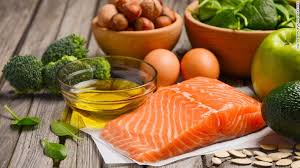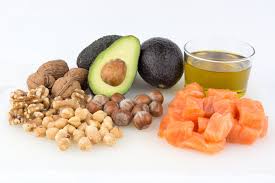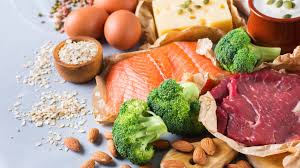Get to Know the Different Types of Fat in Your Diet
As much as you’d like to think that fat is “bad” for you, it’s a vital nutrient that your body needs in the right amount.
Aside from being an energy source and a component in cell growth, your body also needs fat to stay warm, absorb certain nutrients (vitamins such as A, D, E, and K don’t dissolve in water, but dissolve in fat), and even produce hormones.
Knowing the different kinds of fats and what they do to your body can help you make better decisions on what foods to buy and how much you should include in your diet.

The Different Types of Fat
The reason why there are different types of fat is because of how they are structured at a molecular level.
Because each molecule is a combination of hydrogen and carbon, the different ratios of hydrogen atoms to carbon atoms are ultimately what determine the structure of the fat molecule, and what it can do to the body.
There are three types of fat that you need to know about:
• Saturated fat – Red meat and dairy products often contain saturated fats, a type of fat that stays solid and sticky in room temperature because of their high hydrogen-to-carbon ration.
Because of this, they’re more likely to stick to arteries over time, which can make you more prone to heart disease.

• Unsaturated fat – At room temperature, unsaturated fats are in a liquid state and can often be found in oils (olive oil, sunflower oil, etc.), plants (avocado, soybeans, etc.), and even seafood.
You might be familiar with some of these unsaturated fats that can lower LDL cholesterol count and the risk of heart disease, such as omega-3 and omega-6 fatty acids that are found in fish and seafood.
• Trans-fat – Trans-fats serve as a flavor component in food to make it taste better, but their added hydrogen means that they could contribute to all kinds of heart diseases when consumed in excess.
Trans-fats are found in a lot of processed foods, especially in junk food, such as chips, but they can also be found in pastries and different baked goods.

When it comes to living a healthy lifestyle and diet, there’s no need to cut out fat from your diet – when consumed in the right amounts, they can greatly improve your health and make your eating experience that much more fulfilling.
The trick is identifying the healthy fats in your diet, and cutting down on the unhealthy fats if not avoiding them entirely.
At the end of the day, it’s the small decisions that you make in changing your lifestyle that will really have an impact on your overall well-being.

